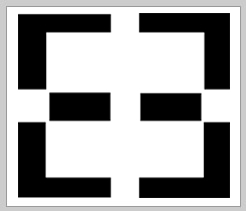Nov 06, 2015
Adinkra Cloth Symbols and Mathematics - Part 3
Adinkra Cloth Symbols and Mathematics - Part 3
The following is excerpted from Dr. G. F. Kojo Arthur's book, Cloth As Metaphor: Re(reading) the adinkra cloth symbols of the Akan, published by CEFIKS Publications.
The adinkra cloth producer, as a keen observer of things that a symmetrical and asymmetrical around him, incorporates the symmetrical nature and asymmetrical balance in his symbols. Symmetry means that one shape becomes exactly like another when it is moved in some way (that is, by a turn, flip or slide - that is through transformation). There are several kinds of symmetry to be found in a collection of adinkra symbols. One is bilateral symmetry in which an object has two sides that are mirror images of each other. The human body would be an excellent example of a living being that has bilateral symmetry. An equilateral triangle would be a geometric example of bilateral symmetry. Bilateral symmetry are found in wofo dua pa na yepia wo (shown in the attached picture).
Another kind of symmetry is radial symmetry. This is where there is a center point and numerous lines of symmetry could be drawn. The most obvious geometric example would be a circle. The adinkrahene symbol is an example of radial symmetry to be found in adinkra.
Examples of transformations are rotation, reflection, translation and scaling. An image has rotation when it repeats at different angles around one point. An example of rotation from adinkra symbols is nkotimsefo pua.


